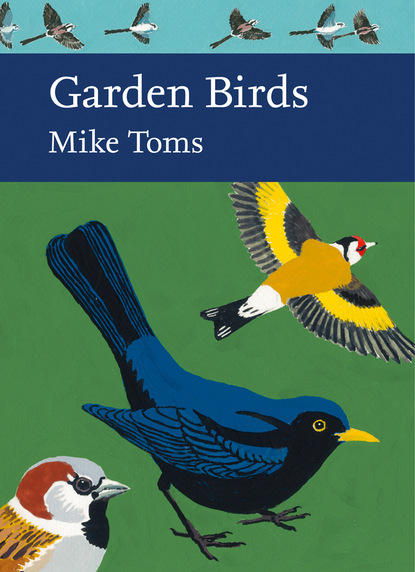
Полная версия:
Garden Birds

FIG 13. The proportion of BTO Garden BirdWatch participants presenting different foodstuffs at their garden feeding stations each week across four of the project years (2014–17). Note the increase in fat and suet provision during the winter months. ‘Live’ foods include dried mealworms. Data reproduced with permission from BTO.
Information from the weekly submissions made by BTO Garden BirdWatchers provides a measure of the change seen in different types of bird food (see Figure 13) but these data come from a subset of the national population (see Chapter 6) and do not reveal the actual quantities provided. Having said this, as part of BTO’s work on microevolution in Blackcaps (see later in this chapter), we were able to estimate that the total volume of sunflower hearts and fat products provided by BTO Garden BirdWatchers during the winter months more than doubled from 6.35 tonnes to 17.26 tonnes over the course of a 12-year period (Plummer et al., 2015).
WHY DO PEOPLE FEED WILD BIRDS?
While bird feeding is clearly influenced by external factors, such as socioeconomic status and having access to a garden, it is also shaped by intrinsic and motivational factors. At its heart, bird feeding may be seen as a humane act, an act of kindness reflecting a wish to help a fellow creature. However, this act may be further shaped by other motivations, such as guilt or a wish to learn. Despite the obvious commercial advantages to be gained by understanding motivations for feeding wild birds, there has been relatively little work in this area and many of our assumptions about why people provide supplementary food for wild birds remain untested (Jones & Reynolds, 2008). Understanding motivations requires a considered and rigorously scientific approach; it is all too easy to inadvertently bias a response from a study subject by asking a question in the wrong way.
The work that has been done suggests that people feed wild birds for a range of different reasons driven by underlying environmental, cultural and philosophical perceptions (Davies et al., 2012). Many people derive pleasure from feeding wild birds and in many instances the provision of food is simply a reflection of this. Others feed because they are concerned about wild birds (and other creatures) and wish to nurture and support them. Some provide food because of the experiential knowledge that is gained, while others seek to counter the guilt that they feel over wider human impacts on the environment.
Examination of a random sample of 1,000 participants in BTO’s weekly Garden BirdWatch scheme (Schreiber, 2010) found that ‘pleasure’, ‘contributing to the survival of wild birds’ and ‘studying behaviour’ were the top three justifications given by respondents for feeding. ‘Responding to environmental degradation’ and ‘teaching children’ were also given as reasons for feeding. Of course, participants in a citizen science scheme like Garden BirdWatch are unlikely to be representative of the wider UK public; they have sufficient interest in garden birds to have become involved in a rigorous monitoring scheme and will have been exposed to articles delivering information and messages on the practices associated with feeding wild birds. At this point it is just worth noting that the provision of supplementary food is sometimes practised for other reasons; conservation practitioners use supplementary food to enhance the survival and reproductive success of endangered species, while others use it to reduce predation pressure by provisioning predators; some use it to bring animals to sites where they can be observed or even hunted.

FIG 14. Peanuts were one of the first foods provided specifically for wild birds visiting UK gardens. Originally presented loose or in net bags, peanuts are now typically provided in mesh feeders, though their use has fallen with the arrival of new high-energy seeds. (Jill Pakenham)
The provision of food at garden feeding stations, and indeed the wider participation in wildlife-friendly gardening, may also be a response to peer pressures or the development of a shared social ideal, or to the opportunities provided by having the time and/or financial resources required. The ‘luxury effect’ noted by Hope et al. (2003), Kinzig et al. (2005) and others, where wealthier neighbourhoods support greater levels of vegetation cover and have a greater richness of vertebrate taxa, may also apply to the provision of food for wild birds. We’ll return to this as we move through the next two sections.
As well as seeking to understand the motivations for feeding, it is also important to understand any concerns that those feeding wild birds may have about the practice. While some individuals may only see feeding as being beneficial – for their own interest or for the welfare of the birds themselves – others may continue to feed even if they have concerns about particular aspects of the practice. The sample of BTO Garden BirdWatch participants just mentioned were also asked whether they had any concerns about feeding and, if so, what these might be. Just under half of the respondents noted that they did have concerns; those highlighted being the risk of disease transmission, the risk of attracting predators, and the risk of attracting unwanted species to the garden.
THE VARIATION IN FOOD PROVISION
Across northern Europe and North America the feeding of wild birds appears to have once been a winter practice, suggesting that food was provided in recognition of the challenging winter conditions being faced by birds. To some extent feeding remains a winter practice; as data from BTO Garden BirdWatch reveal, the proportion of its participants providing supplementary food shows a strong seasonal pattern with increasing provision during the winter months. Up until the 1980s, the prevailing view was that feeding wild birds during the breeding season would lead to adult birds feeding their young on unsuitable foods and perhaps lead to nestlings choking on ‘indigestible foodstuffs such as peanuts’. Despite this, a pronounced move towards feeding year-round was made during the 1980s, when the advice provided by both the RSPB and BTO switched from winter only to feeding throughout the year.
The switch in BTO’s position was evidence-based and derived from work carried out by Patrick Thompson, who organised a special spring extension to the BTO’s Garden Bird Feeding Survey (Thompson, 1987). The study sought to compare the numbers of feeding birds in the spring with those seen in winter and to determine which species made use of garden feeding stations during this period. Some 181 participants took part in the winter component, with 113 contributing to the spring extension. While fewer species were recorded in the spring component than in the winter, the same species were present in the top 12 in both studies; for some species the level of feeding in spring was as high as, or higher, than that seen in autumn or winter. In House Sparrow, for example, feeding activity peaked in late spring. Other species, e.g. Robin, Blue Tit and Great Tit, used provided food extensively through into the first month of the spring survey, but after this their use of this resource dropped markedly. This drop in use was thought to reflect a shift towards natural prey, which generally become more abundant in spring. That seed-eating species, like Dunnock Prunella modularis and Greenfinch, did not move away from provided food quite so quickly perhaps underlines a lack of seed availability more widely until later into the year.
The second component of Thompson’s study looked at the breeding season use of supplementary food (peanuts) by Blue Tits and Great Tits across 13 gardens at Ashridge Park, Hertfordshire. This population had been studied by the BTO’s Chris Mead since 1977. Chris was a key figure in the development of several projects studying garden birds. The garden-nesting Blue Tits bred significantly earlier than those breeding in nearby woodland and laid larger clutches. There was no difference in the timing of laying between the two Great Tit populations but the garden-breeding birds laid significantly smaller clutches than their woodland counterparts, and there was no significant difference in the fledging success of either species between the two habitats. The feeding habits of the adult tits were also carefully monitored. While Great Tits were very rarely seen to feed their young on peanuts (less than 7 per cent of visits), the Blue Tits were never seen to do this. Importantly, no young tits were reported to have died from ingesting nuts.
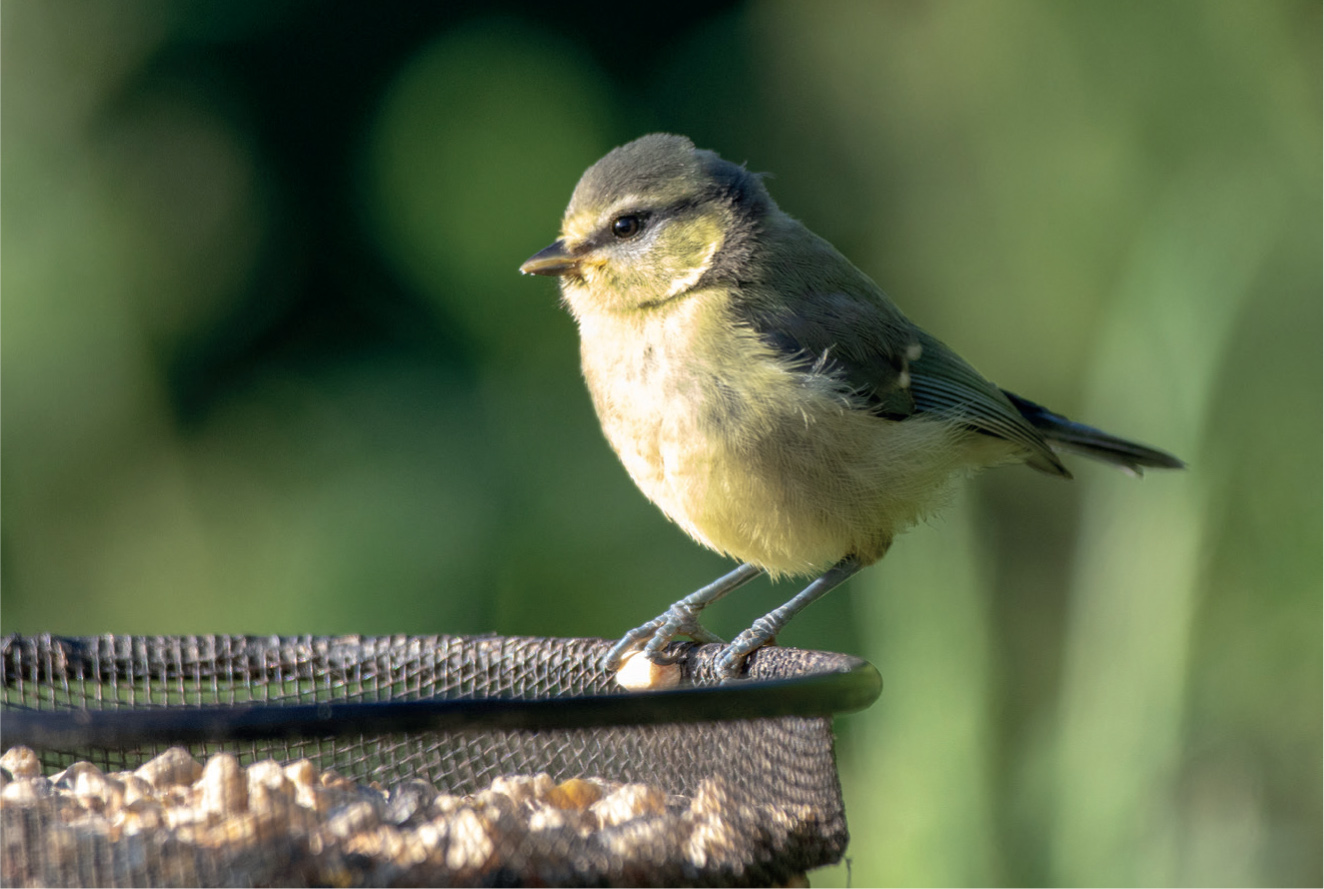
FIG 15. While the food available at garden feeding stations appears to be important to young Blue Tits once they have left the nest, it is only rarely provided to nestlings by adult birds. (John Harding)
Elsewhere, both Cowie & Hinsley (1987) and Perrins (1979) have noted a lower fledging success in tits using gardens compared to woodland habitats, with much of this down to chick starvation, despite the fact that supplementary foods are available in this habitat. This underlines the reluctance of adult tits to feed their young on supplementary food. Collectively, the evidence from Thompson’s study and the wider literature convinced BTO to change its advice on year-round feeding, recognising that the extra food may provide a ‘valuable food source to adult birds’. The advice to switch to year-round feeding in Germany was made even more strongly by Peter Berthold and Gabriele Mohr, both respected researchers, whose book Vögel füttern, aber richtig – loosely translated as ‘feeding birds, but right’ – made a scientifically based case for year-round feeding. Although initially criticised in some scientific circles, the book was well received by birdwatchers, shifting 50,000 copies within two years of first publication. Figures from the UK, taken from the RSPB’s marketing study, suggest that winter and summer feeding levels are now fairly similar, at least in terms of the proportion of people providing food (53 per cent summer and 59 per cent winter).
DIFFERENCES BETWEEN INDIVIDUALS
The suspicion that some people are more likely to put out food for birds than others has proved difficult to test, in a large part because of the methodological difficulties in securing a random and representative sample of respondents when carrying out questionnaire-based studies. The scale at which the data are collected can also cause problems for their interpretation. Fuller et al. (2012), for example, found that three different measures of socioeconomic status – household income, the age of householders and the number of individuals comprising the household – were poor predictors of bird feeding behaviour at the national level; however, all three were found to be strongly related to both the presence of bird feeding and the spatial density of bird feeding stations when they just looked at the city of Sheffield. It appeared that by aggregating data at a wider scale, the researchers had averaged away important fine-scale differences. The Sheffield data revealed that bird feeding and the spatial density of bird feeders increased as household income increased but showed an interesting ‘humped’ relationship with the age and number of householders.
Provisioning may also vary between individuals in terms of how often they put out food, the types of foods they provide and where the food is presented. Roughly a quarter of those interviewed by the RSPB put out food daily, with half putting out food at least once a week, and food was presented roughly equally across bird feeders (33 per cent), bird tables (27 per cent) and on the ground (30 per cent). Davies et al. (2012) found that just 29 per cent of the households they studied provided food at least once a week. The work in Reading, mentioned earlier in this chapter, had a more detailed second component; this looked at a subset of people feeding birds within the city, charting what they provided over a two-year period. As well as the finding that a significantly higher proportion of the individuals feeding year round provisioned daily, compared to those who only fed the birds during autumn and winter, the Reading work also collected valuable information on the amount of food being given. This revealed that each day the median amount provided per garden was 127 g, though ranging from 18 g to 3,573 g. Knowing what food was being provisioned, and in what quantities, enabled Orros and Fellowes to calculate a daily energy value of 628 kcal provisioned per garden per day. In addition to variation in the quantities of food provided, there was also variation in the types of food provided, with 91 per cent of individuals provisioning one to three types of food. Mixed seed was the most commonly provisioned food, by both mass and kcal; interestingly, 43 per cent of individuals still provisioned household scraps.
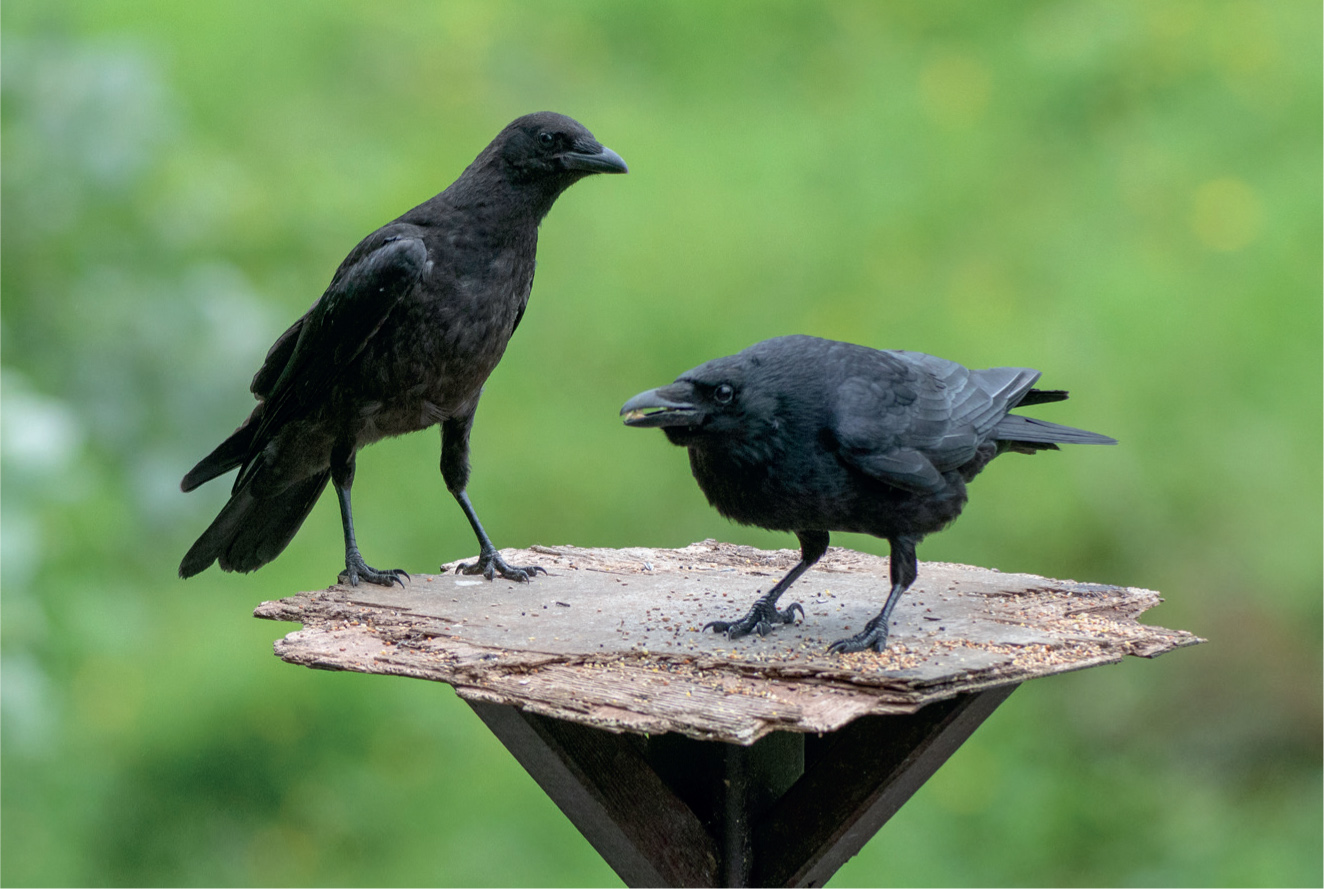
FIG 16. Various members of the crow family, including Carrion Crow, have taken advantage of the feeding opportunities available at garden feeding stations. Work in North America has highlighted how the nature of these opportunities may vary regionally. (John Harding)
Work in the US has also examined the question of who feeds wild birds, revealing that older people are more likely to provide supplementary food than young people (Lepczyk et al., 2012), and are more likely to be women and to have achieved higher educational qualifications than those not participating (Lepczyk et al., 2004a). Mark Goddard, working on why people in Leeds garden for wildlife, also found that the frequency of bird feeding increased with age (Goddard et al., 2013). The RSPB marketing study, which is probably the study that is most representative of the wider UK population, found that interviewees 35 years of age or older were more likely to feed their birds than those under 35 (RSPB, unpublished). Of course, the characteristics of those provisioning wild birds may sometimes confound attempts to examine the relationships between food provision and other features – for example, housing density (something we touched on in the previous chapter).
REGIONAL DIFFERENCES
Cultural differences in attitudes to birds may explain many of the regional differences in the types and quantities of supplementary food provided for garden birds. The biggest markets for wild bird food and feeding products are based in Europe and North America but even within these regions there are differences between countries and peoples. Within Europe, for example, the feeding of wild birds is common in Germany, Poland, Finland, Switzerland, the UK and the Netherlands, but not in France, Spain or indeed other Mediterranean countries. That cultural differences might be behind the patterns seen within Europe could be suggested by the differing attitudes towards the hunting of small wild birds, still a common practice in the south of Europe but not in the north. Could the differences within Europe also relate to geography and the harsher winter weather encountered further north within the continent?
As Lepczyk et al. (2012) found, some of these regional differences in provisioning practices within North America do indeed relate to climatic conditions. Through a series of parallel studies Christopher Lepczyk and colleagues found that householders in Michigan and Arizona had differing attitudes towards the provision of supplementary food for birds; while 66 per cent of respondents in Michigan provided food, just 43 per cent of those in Arizona did so. The authors put this down to the fact that Michigan is a region that experiences severe winter weather, during which birds face harsher environmental conditions, while Arizona has a more favourable winter climate. In addition, Lepczyk found that Michigan residents were more likely to provide high-quality supplementary foods (such as thistle and sunflower seeds) than those living in Arizona. One further pattern of interest can be seen in in Lepczyk’s study: relatively fewer urban residents engaged in the provision of high-quality food than was the case for non-urban residents; they were, instead, more likely to provide food of a lower quality.
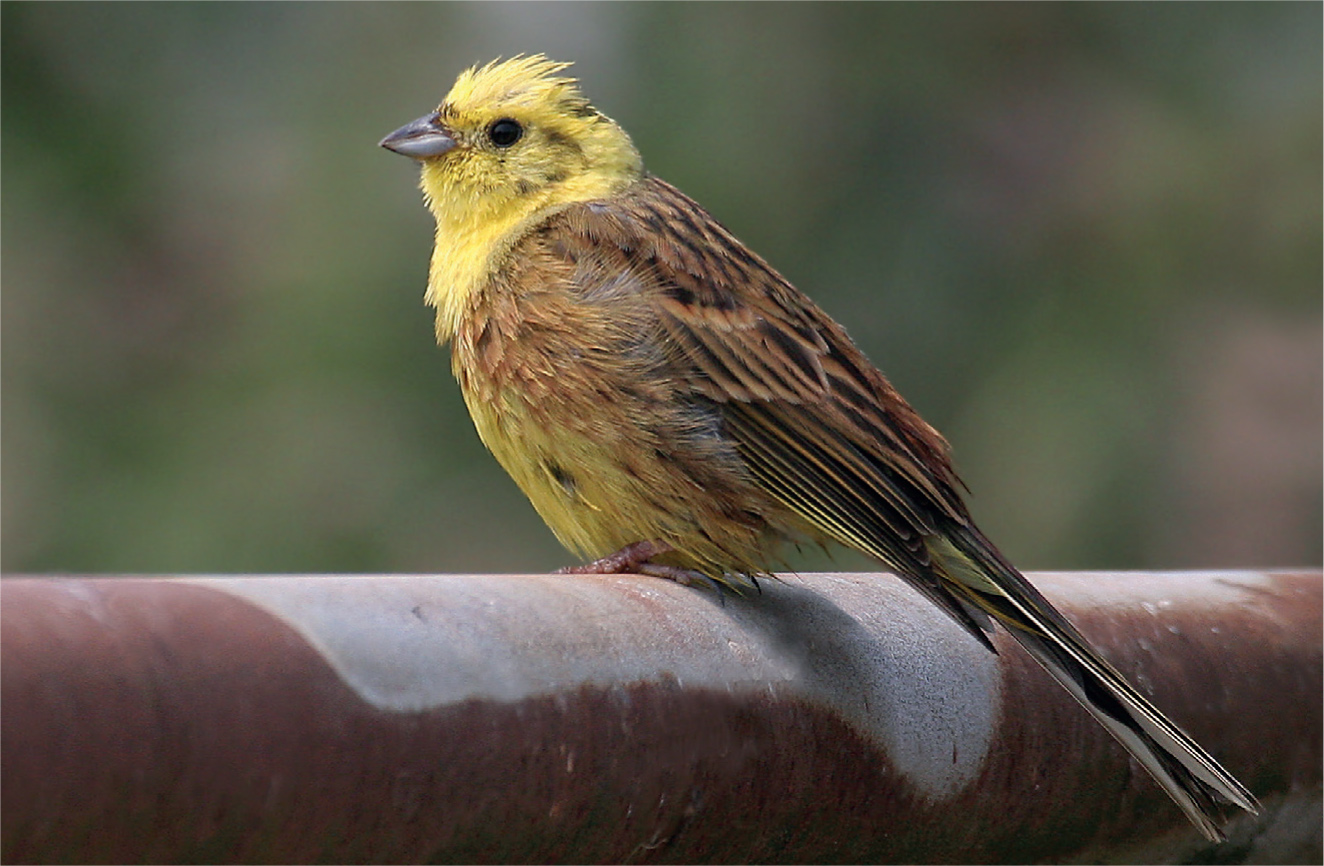
FIG 17. Granivorous (seed-eating) species, like Yellowhammer, dominate at UK garden feeding stations, while insect-eating species tend to be less common. (Jill Pakenham)
Similar findings were reported from Poland, where Tryjanowski et al. (2015) found that urban and rural areas differed in the availability of food, offered intentionally or unintentionally to wild birds during the winter months. Both intentional and unintentional food provision was greater within urban areas than it was in rural locations. While the number of bird feeders and feeding stations differed significantly between the two habitats, the proportion of feeders containing food was similar. Tryjanowkski found differences between the two habitats in the availability of several foodstuffs, with seed feeders and waste food significantly more common in the urban area and animal fat more common at rural sites.
There also clear regional differences in the types of food being provided for wild birds at garden feeding stations in different countries. While the main foods provided at garden feeding stations in the UK and elsewhere in Europe are seed-based, in North American backyards we see the additional use of sugar solution feeders for hummingbirds, and in Australia we see many more high-protein foods provided (such as meat and cheese), reflecting the differing range of species more commonly encountered in Australian backyards.
A BRIEF HISTORY OF FOODS AND FEEDERS
Quite where our willingness to feed wild birds originated is unclear but it is likely that food scraps have been provided to wild birds over hundreds of generations. Perhaps the earliest written evidence of material encouraging the feeding of wild birds is that provided in ancient Hindu writings from the Vedic period (c. 1500–500 BCE). This material describes the practice of Bhuta Yajna, which was one of the five great sacrifices used to develop the spiritual growth of a man. Bhuta Yajna involved the placing of food offerings known as bali on the ground; these being intended for ‘animals, birds, insects, wandering outcastes and beings of the invisible worlds’.
Wild bird feeding in the form that we know it today receives very little mention in historical documents and it is not until the 1800s that we see references encouraging or supporting the practice. Allen (1967) refers to the ornithotrophe, a device developed by John Freeman Milward Dovaston – a minor romantic poet and regular contributor of articles to Loudon’s Magazine of Natural History. The device was essentially a modified trough, fitted with rows of perches and filled with household and farmyard scraps. A man with an obvious talent for self-promotion, Dovaston promoted the device and its success in attracting birds through letters to the magazine penned under the pseudonym of Von Osdat. Reference to the device also made an appearance in notes to the preface of the first volume of Bewick’s A History of British Birds. Bird tables were certainly in use by the 1850s, and promotion of feeding of urban birds is mentioned as early as 1875, through a piece that appeared in the 16 February edition of the Edinburgh Evening News. This article noted that a society for feeding birds in winter had established 22 feeding stations across the town, recognising their important role in controlling insect pests.
As Darryl Jones notes (Jones, 2018), perhaps one of the most important events in the development of bird feeding within the UK was the 1908 publication in English of a German book on how to attract and protect wild birds. Written by Martin Hieseman, the book was based on the work of Baron Hans Freiherr von Berlepsch, a nobleman who had spent a considerable amount of time conducting ornithological experiments on his large estate. Included within the publication were several ‘appliances’ that had been developed to provide wild birds with food. Of these, the ‘food bell’ and ‘food house’ would be recognisable today; a somewhat more outlandish appliance – though you can see where the Baron was coming from – was the ‘food tree’. This was a small spruce or fir tree over which a mixture of meat, bread, poppy flour, millet, oats, elderberries and seeds, bound together with beef or mutton fat, was poured. A smaller version of this appliance – the ‘food stick’ – presumably was aimed at those with less opportunity to produce small conifers quite so readily.
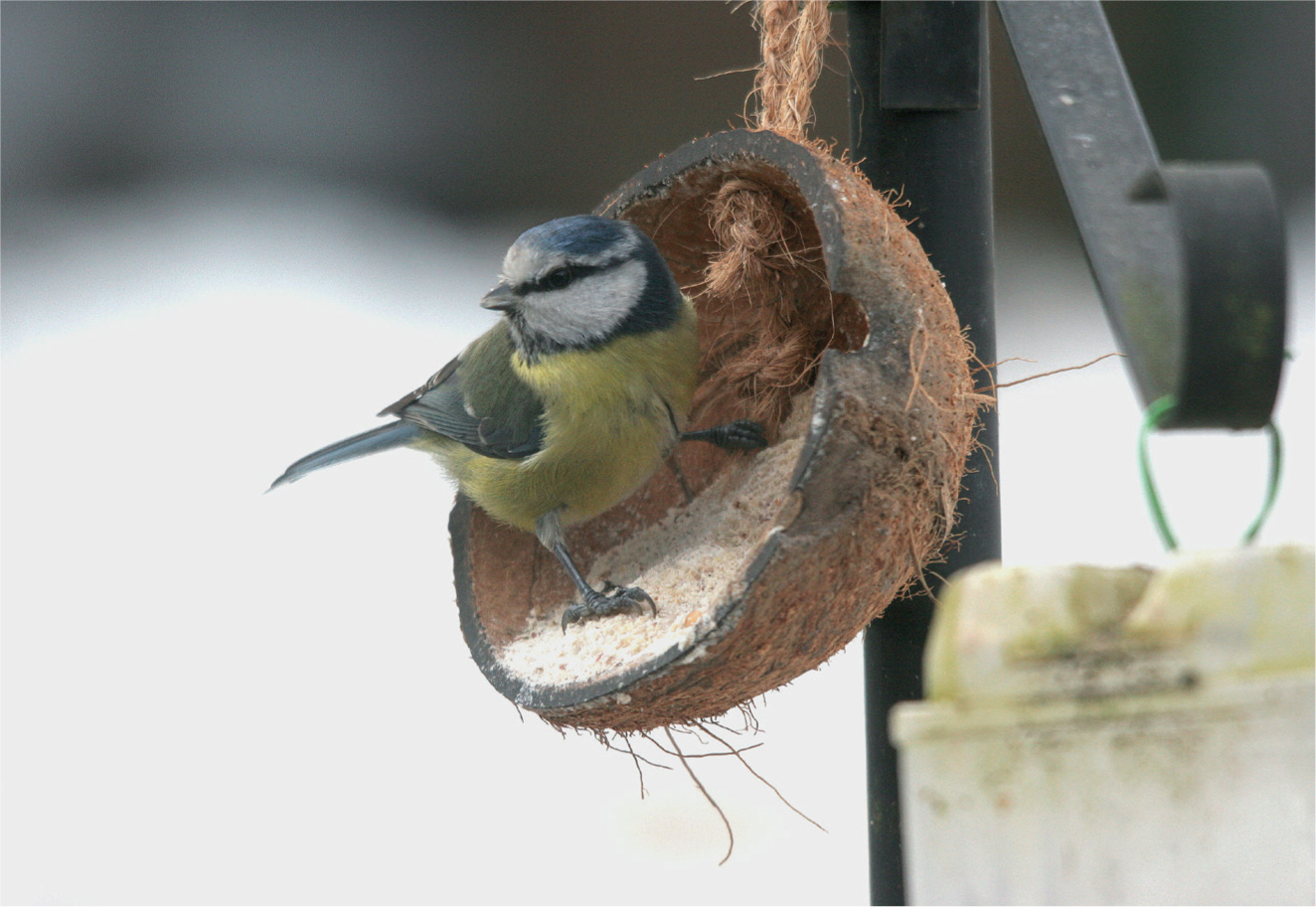
FIG 18. The use of coconut shells, filled with fat or suet, is still popular with both garden birds and those who feed them. (Mike Toms)
Over the ensuing decades more publications followed, some of which proved instrumental in shifting us towards today’s pattern of year-round feeding. The growing interest in feeding wild birds was certainly being recognised as a characteristic of the UK population; a 1910 article in Punch magazine identified bird feeding as a national pastime and included a number of adverts for feeding devices. A major development in bird feeding occurred when Droll Yankees’ 1960 A-6F tubular bird feeder was produced. This device supported the delivery of seed, particularly sunflower seed, keeping it dry and secure. More recent changes have largely sought to modify the successful Droll Yankees’ design, for example by looking at the shape and positioning of the feeding ports and their associated perches.
THE TYPES OF FOODS PROVIDED
It wasn’t just the development of feeding devices that proved to be important. In the US, the Kellogg Seed Company, which had been selling birdseed since the end of the First World War, brought a seed mix – the ‘Audubon Society Mixture’ – to market, a mix that had been developed in association with the Audubon Society following a series of experiments to determine which foods were preferred by wild birds. Five years later, ‘Swoop’ Wild Bird Food appeared in the UK and soon after that came new forms of sunflower seed and the tiny black seeds of Niger Guizotia abyssinica. While the main markets for wild birdseed are in Europe and North America, the key production areas lie elsewhere, in eastern Europe (particularly important for sunflower seed), China, India and Myanmar.
The foods provided at garden feeding stations differ in their composition, both in terms of macronutrients like carbohydrate, fat and protein, and micronutrients like calcium, carotenoids and vitamin E. All are important for birds, though in differing amounts and some may be more important at particular times of the year than at others. Protein, for example, plays an important role in female birds as they prepare for the demanding production of a clutch of eggs. When you look at the foods most commonly provided at garden feeding stations here in the UK, you soon discover that they typically have a higher fat content relative to that of protein: black sunflower seeds (fat 44.4 per cent : protein 18.0 per cent), peanuts (44.5 per cent : 28.7 per cent) and peanut cake (70.5 per cent : 17.1 per cent) (Jones, 2018). In addition to their carbohydrate, protein and fat content, foods like peanuts and sunflower seeds may be important sources of micronutrients, such as vitamin E. As will become clear later in this chapter, these micronutrients are not just important for the adult bird; they are also important for eggs and their developing embryos.
Sunflower seeds and sunflower hearts
The sunflower seeds used for bird feeding have a relatively high edible oil content, something that results from several decades of work using selective breeding. The plant itself originates in North America and was initially cultivated by Native Americans, the seed probably arriving in Europe through Spain. Russian agronomists took a great deal of interest in sunflower seeds and began a programme of work selecting for those that were high in oil, successfully delivering an increase in edible oil content from 20 per cent to almost 50 per cent. These high edible oil lines from Russia were reintroduced into North America after the Second World War, rekindling interest in the crop. It is from here that sunflower seeds appear to have entered the bird food market, although eastern Europe and Russia – which account for just under half of the worldwide production – are now the most important source for sunflowers entering the UK market. Worldwide production is about 40 million tonnes.



